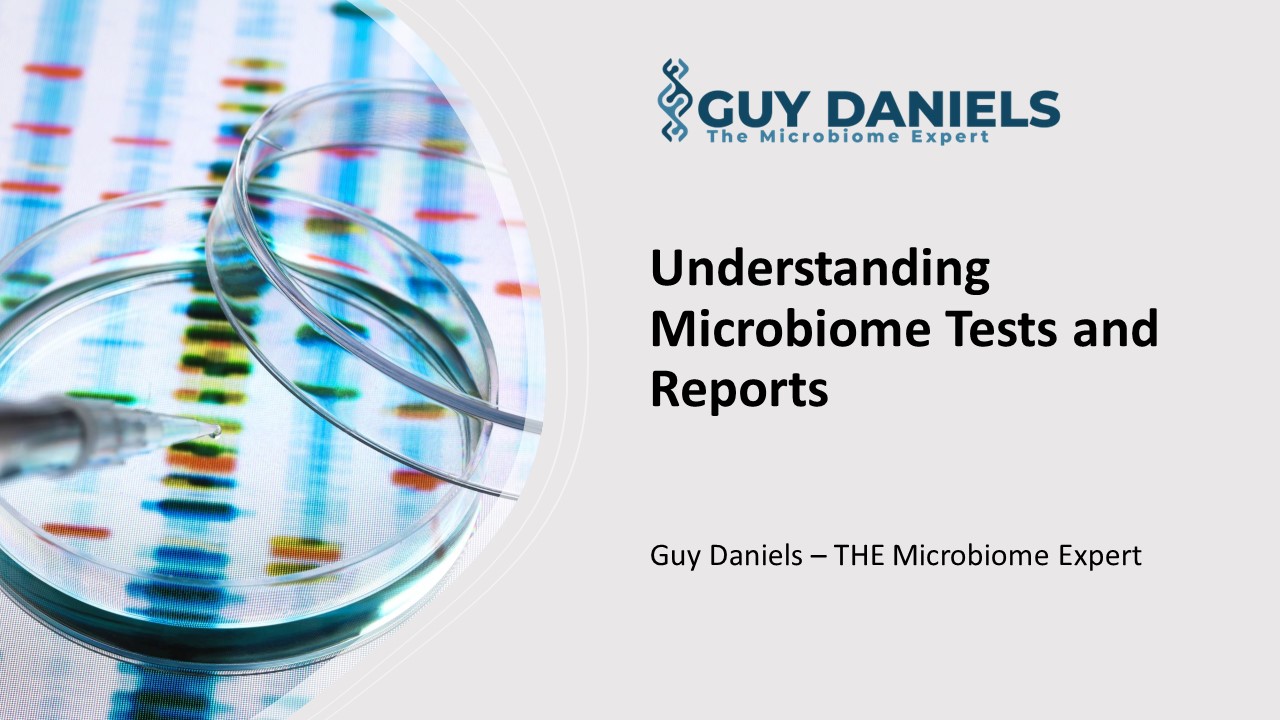The field of the microbiome, and its proven impact on our health is fascinating. We have a whole other foreign ecosystem inside of us, and the pieces of the puzzle are coming together. It’s such a new field, that there are only a handful of people at the tip of its spear. Some of those people offer at-home microbiome testing services. And as more and more of the public and medical institutions learn about the power of the microbiome, it becomes more popular. You yourself may have already used one of these kits, or perhaps you are thinking about it. Which one should you choose? Is it even beneficial? Can anyone truly translate the report for you?
As the former head of medical education for a microbiome firm, I am now on my own, with a platform dedicated to helping others learn about the microbiome. In my former role, not only did I interpret the reports, I built them. I analyzed all of the data, and continue to do so, to ensure the very best results possible for patients and subjects in trials.
With these reports, there are many issues to consider. First, there can be different types of methods to analyze the microbiome. Second, this science is a bit inexact. It takes a true expert to interpret the results, assuming the proper datapoints are even present in the report. There is also a lot of fluff and noise in the reports. Some of the information is useless and inactionable. Other times, there’s too much information, where people can get lost in the weeds.
Practitioners are not trained in this science. In fact, I’ll bet that most of the time, the average self-educated patient knows more about the microbiome than your average practitioner. The current medical system is less geared towards understanding root causes, and more geared towards prescription drugs, surgery, the avoidance of lawsuits and insurance reimbursement. Where does this leave you? It leaves you fending for yourself. Which is exactly what you should be doing in a broken system which is terrible at managing chronic degenerative diseases.
So, you’ve taken charge of your own healthcare. And you’ve read a few things about the microbiome, and so you want to do a test, or have done one already. Now what? I’ll bet you can’t translate the report for yourself. Have you wasted your money? Who can translate this foreign language?
On an individual level, the primary question is, “are these tests even worth it?” The answer is, “maybe”. It depends on the data in the report. On a larger level, these tests have been used in clinical trials for over two decades and have provided an excellent reference database. Whether the analyses are done via PCR, 16S or shotgun metagenomics technology, the trends are the same for the key players in your microbiome. Good guys are good, regardless of country, year or methodology. And bad guys and bad.
If you need someone to help you with your report, and provide actionable information, then I’m your guy. If you are on the fence, I’ve got something for you to consider. In my massive database, I have procured the average microbial fingerprint for a wide array of conditions/diseases. These keystone taxa do vary from condition to condition, but the themes are the same. In general, a dysbiotic environment in the gut will have a significant reduction in a number of amazing health-promoting bacterial taxa. They have names you’ve never heard of before, names like Faecalibacterium prausnitzii, Eubacterium rectale, Coprococcus, Roseburia and more. Conversely, the dysbiotic gut will have significant increases in what are called opportunistic pathogens, the bad guys. These taxa have names like Ruminococcus gnavus, Klebsiella, Veillonella, Enterococcus and more. Not only have I done the complete analysis to understand what these microbial fingerprints look like, I’ve also done the complete analysis to understand which health-promoting taxa prefer which fuel/prebiotic. By feeding the good guys, they can return the microbiome to a healthy state. I have developed protocols based on these factors, and they work. Just take a look at my testimonials.
If that doesn’t convince you, you can start by watching my free presentation entitled, “Understanding Microbiome Tests and Reports.” You can find this presentation on my YouTube channel or in the Microbiome University tab on my website. And if you’re still hungry for more information after that, I have something on every conceivable topic on the microbiome, and I show you the data to support everything I say. Is anyone else doing that?
In our world as it is, we all now have to be our own health advocates. With a broken government, food and medical system, you need to take charge of your healthcare. So, educate yourself, as best you can. This is why I’ve launched my educational platform. For you. If you think your health would be well served by addressing your microbiome, you can visit the Protocols tab on my website, and for the mere price of a cup of coffee, you can find a science-based protocol which may dramatically improve your quality of life.

